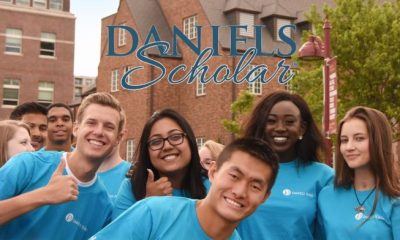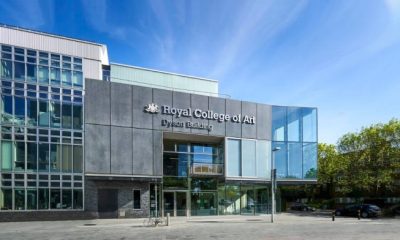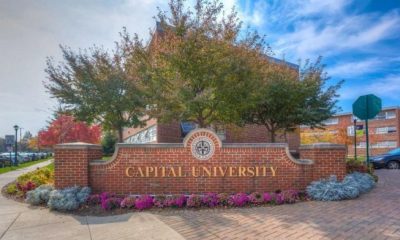Visa
Differences Between J1 Visa And F1 Visa, FAQs & More

For individuals seeking degrees and certifications from U.S.-based universities, studying here can be beneficial. This article discusses the differences between F-1 and J-visas, the main visas for international students in the U.S. You can decide which F-1 or J-1 visa is better for you after comparing them. Choosing between the two can be difficult without prior information, and an expert may make the best choice. Learn about the pros and cons of each visa and how to choose the best one for your immigration scenario.
J-1 Visa
The J-1 visa is sometimes known as a “exchange visitor visa.” Rather than having a sponsoring employer, J-1 visa holders have Department of State-approved sponsoring programs. This visa is meant for persons from all over the world who want to learn skills in the United States and then return to their home nations. As a result, each person who enters the United States under J-1 status is compelled to return home for at least two years before returning to the United States, a provision known as the “home residency requirement.”
However, avoiding the home residency requirement is relatively easy. There are four major situations that can earn you a J-1 visa waiver:
- A statement of No Objection from your home country’s government
- Evidence that returning to your home country would expose you to persecution
- Evidence that returning to your home country would result in extreme hardship for your family members
- Having a U.S. government agency express interest in having you remain in the U.S. after your J-1 stint (IGA waiver)
Here are the programs that the J-1 accommodates:
- College and University Student
- Secondary School Student
- Research Scholar
- Short-Term Scholar
- Specialist
- Intern
- Government Visitor
- Summer Work Travel
- Camp Counselor
- Physician/Doctor
- Professor
- Teacher
- Trainee
- Au Pair
- International Visitor
Your length of stay will depend on the program you choose. Some only last six months while others can last up to 10 years depending on the situation.
The F-1 visa is one of two student-specific visas, the other being the M-1 for vocational schools. Through the F-1, you will be able to live, study, and in some cases work in the U.S. for the duration of your scholastic program.
The F-1 is for those who wish to enroll in a:
- Private elementary school
- High school
- College
- University
In order to qualify, you must show:
- That you are maintaining a permanent residence outside of the U.S. This should be substantial enough to show that you have incentive to return home after your stint.
- That you have other assets that would cause you to return home such as property, a car, family, a bank account, or a job offer.
- That you can financially support yourself while you are in the U.S.
- That an institution for education has or will sponsor you for your visa.
Summary: Difference Between F-1 and J-1 Visa
There are numerous distinctions between F-1 and J-1 visas. While both are appropriate for foreign students and professionals who want to study in the United States, some major differences are connected to your eligibility to work during and after your education. Your finance requirements will vary greatly depending on the type of visa you obtain. A quick comparison summary is provided below:
1. Funding
J-1 Visa
- The majority of your funding must come from other than your personal savings or from family and friends. Over 51% of your funding must come from scholarships, grants, fellowships, assistantships, research funding or funding from your home country’s government, corporate sector, or other organizations.
F-1 Visa
- Any source of funding is considered acceptable. It can vary personal or family funds to public scholarships or industry funding. There are no restrictions on what type of funding you must have.
2. 2 Year Home Residency Requirement
J-1 Visa
- Yes, however, there are exceptions.
F-1 Visa
- Not applicable to F-1 visa holders.
3. Employment
J-1 Visa
- Allowed to work up to 20 hours per week (part-time). Must obtain work authorization. Only allowed to work at the educational institution and the job must be related to the field of study.
F-1 Visa
- Allowed to work during studies if the position is part of a paid or unpaid academic internship. Also allowed to work after studies for up to 12 -24 months, depending on your field of study.
4. Grace Period
J-1 Visa
- You will have 30 days to leave the U.S. after the completion of your studies.
F-1 Visa
- You will have 60 days to leave the U.S. after the completion of your employment or studies.
5. Health Insurance
J-1 Visa
- Must have health insurance for the duration of your stay in the U.S.
F-1 Visa
- Health insurance is not required, however, many educational institutions may require you to have one.
Studying in the US: F-1 vs J-1
Both the J-1 and F-1 are student-focused. Most U.S. students choose one of these two options, which may be why you’re reading this.
Both visas let you study at any secondary school or university in the country and acquire any degree or certification that requires credits. However, your university must sponsor you. This means you can’t transfer schools without their sponsoring you.
Working in the US: F-1 vs J-1
Regular employment is a major difference between J-1 and F-1 visas. J-1 students can work with permission. However, most J-1 programs (schools) allow only 20 hours of campus labor each week. You could work as a teacher’s aide, custodian, food service, library, bookshop, or security. You must contact your school to find out what J-1 student employment are available.
But the F-1 lets students work off campus. It cannot be in the first year of studies and under specified conditions. You can pick after your first year:
- Curricular Practical Training (or CPT) – this is a work avenue that is a part of your school curriculum, which may include paid or unpaid internships.
- Optional Practical Training (or OPT) – you can choose between pre-completion or post-completion OPT to work while you are studying. This kind of work can only be done if it is directly related to your field of study. If you choose post-completion, you can stay 1 full year after your studies have concluded.
- STEM (Science, Technology, Engineering, and Mathematics) OPT – Simply put, this allows you to stay and work for 2 full years after your studies have concluded.
Difference Between F-1 and J-1 Visa: Getting a Green Card
Some nonimmigrant visas are called “dual intent” because they allow you to pursue green card status without affecting your nonimmigrant status. Unfortunately, J-1 and F-1 visas are not dual-intent. This implies filing for a green card could remove your J-1 or F-1 status and set a bar on your U.S. return for a specific time.
Both visas require you to study in the U.S. before returning to improve yourself and your country. Therefore, you must verify that you have a permanent residence in your home country and strong links that would motivate you to return (e.g., bank accounts, vehicles, family, etc.). You must also state your intention to exit the U.S. after J-1 or F-1 approval.
To apply for a green card, you must transfer to a dual purpose visa. Some frequent alternatives and their requirements:
This is the most popular dual intent visa due to its modest criteria and many benefits, including being allowed to work full or part-time, for multiple employers, and quickly transferring status. This is a big improvement over J-1 and F-1 visas, which have severe employment requirements. Just have a work offer from a U.S. company for a specialty occupation (usually requiring a bachelor’s degree) to qualify. The requisite degree is also required.
The negative is that the USCIS caps H-1B visas due to their popularity. A random lottery selects petitions for processing each year. Because several hundred thousand petitions are filed year and only 80,000 are selected, winning the H-1B lottery is unlikely.
If you don’t like the lottery, try the L-1 visa for international staff transfers. This visa class has two subcategories. The L-1A visa is for managers and executives, while the L-1B is for employees with specialized knowledge.
Work for one year for the company in your home country with a U.S. office, affiliate, branch, or subsidiary. Your firm can then move you to the U.S. via the L-1. Thankfully, this visa has no yearly cap or educational restrictions.
This last dual intent visa is less popular due to the fact that the requirements are much higher than most visas. The O-1 is for aliens with extraordinary achievements in areas like business, science, and art. You can see our O-1 requirements page to find out what you can use as evidence for an O-1.
Once you have chosen the dual intent visa that works for you, you will need to file an I-129 along with the supporting evidence and filing fees. In most cases, you can simultaneously file the I-140 petition for your green card. Here are the most popular employment-based green cards:
The EB-2 green card may be appropriate for J-1 and F-1 visa students pursuing higher degrees in the U.S. If you can get into the U.S., an advanced degree will qualify you for an EB-2. You must also demonstrate remarkable skill by submitting proof on our EB-2 page.
An employer must sponsor you and acquire PERM Labor Certification. This requires a thorough recruitment process to ensure that your employment will not harm U.S. workers’ jobs.
You can also waive PERM and sponsoring employer restrictions with a National Interest Waiver (NIW).
EB-3
The EB-3 generally takes longer to obtain, but the qualifications are more accessible. To be eligible, you need to either have a bachelor’s degree or have more than 2 years of experience in your field. With less than 2 years of experience, you can qualify for the “other workers category”, which has slightly different priority date waiting times. Essentially, as long as you have a U.S. job offer for a position that is not temporary or seasonal, you should be able to qualify for an EB-3.
J-1 or F-1 to Green Card Process
So, if you are under J-1 or F-1 status here are the steps you need to take to get an employment green card:
1. Choose both a dual intent nonimmigrant visa and a green card that best fit your situation
2. File the I-129 petition for that visa along with your I-140 for the green card along with the necessary supporting evidence and filing fees.
- If your green card requires a PERM Labor Certification, your business must go through the Department of Labor to conduct rigorous recruitment for your position, which includes posting ads and interviewing qualified people. This stage can take up to nine months unless your employer is audited (either randomly or on a targeted basis), which can take up to a year and a half.
3. Wait for your priority date to be current
- Your priority date is the day that the USCIS receives your I-140 petition
- Stay up-to-date with the latest visa bulletin from the Department of State, which posts monthly final action dates based on the type of green card you are pursuing and your country of origin.
- Your priority date is considered current when the final action date in your category matches or passes your priority date.
4. Make sure that your I-140 has been approved once your priority date is current.
5. File an I-485 Application to Adjust Status or Register Permanent Resident and wait for approval.
You can also pursue a family or marriage-based green card, which follows the same steps, except the petitions will be different. Speak with your immigration attorney to determine which route is best for your unique case.
Which is better F-1 or J-1 visa?
As you might expect, your present situation and future goals determine whether you should apply for the F-1 or J-1 visa. Both student visas allow you to study in the US without restrictions. The primary distinction is whether and how you want to work during or after your study. For this, the F-1 visa is usually best because it lets you work off-campus in your field for one to two years after graduating. In contrast, the J-1 enables solely campus work. However, F-1 applicants must wait one year before applying for off-campus jobs.
After their validity time, F-1 holders are not required to return home. If your home country’s government issues a No Objection Statement, the J-1 can overcome this. Make sure your immigration attorney reviews your case and advises you on the best course of action.
Can I have J-1 and F-1 at the same time?
You can technically have both, J-1 and F-1 visas at the same time as long as you are able to show that you will enter the U.S. on one of the visas, then leave and enter again on the other visa. This unique situation might not be applicable to too many people; however, some people might find it useful if they are in the process of switching visas or have multiple study options in the U.S.
Other Options
The J-1 and F-1 visas are not the only method to live and study in the U.S. For instance, many secondary visas allow study. Dependent visas include H-4, L-2, O-2, and E-2. These visas allow wives and dependents of H-1B, L-1, O-1, etc. holders to study at most schools. Spouses and dependents can apply for Employment Authorization Documents to work together. If a spouse or parent possesses U.S. nonimmigrant status, you may explore these visas if the F-1 or J-1 are not an option.






















